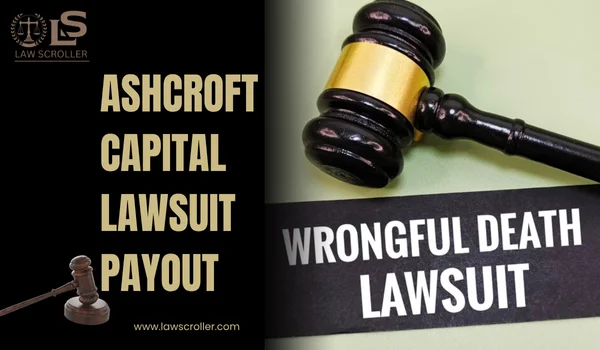Losing a loved one because of someone else’s negligence or wrongful act is one of life’s hardest experiences. Families are often left with grief, confusion, and financial burdens — from medical bills to lost income.
In such cases, a wrongful death lawsuit can help hold the responsible party accountable and provide financial support to those left behind. But here’s something many people don’t realize until it’s too late:
👉 You only have a limited amount of time to file a wrongful death claim.
That deadline is called the “statute of limitations.” If you miss it, you could lose your right to seek justice — no matter how strong your case is.
This guide explains what the wrongful death statute of limitations means, how it works, and what families should do to protect their rights before time runs out.
Background: What Is a Wrongful Death Lawsuit?

A wrongful death lawsuit is a civil claim brought when someone’s death is caused by another person or company’s negligence, carelessness, or intentional wrongdoing.
These lawsuits are not criminal cases — they don’t send anyone to jail. Instead, they focus on financial compensation (damages) to help surviving family members recover from their loss.
Common examples include:
- Car or truck accidents caused by reckless drivers
- Medical malpractice, such as surgical errors or misdiagnosis
- Defective products, like unsafe machinery or faulty medications
- Workplace accidents due to unsafe conditions
- Criminal acts such as assault or homicide
A wrongful death lawsuit can cover funeral costs, lost wages, medical bills, and the emotional suffering caused by the death.
But to claim this compensation, you must act within the legal time limit.
What Is the Statute of Limitations?
The statute of limitations is the legal deadline for filing a lawsuit.
Every state in the U.S. sets its own timeline for how long families have to file a wrongful death claim — typically one to three years from the date of the person’s death.
Once that deadline passes, courts usually refuse to hear the case, even if the evidence is strong or the other party admits fault.
In short:
⏳ If you miss the statute of limitations, your case is over before it begins.
Who Is Affected by the Wrongful Death Statute of Limitations?
The statute affects anyone who wants to file a wrongful death lawsuit, including:
- Spouses or Domestic Partners
They’re usually the first in line to file since they often suffer financial and emotional losses directly tied to the deceased.
- Children of the Deceased
Minor or adult children can typically join the claim or benefit from it.
- Parents of the Deceased
If the victim had no spouse or children, parents can usually bring the lawsuit.
- Other Dependents or Estate Representatives
In some states, the deceased person’s estate executor or other dependents (like stepchildren or siblings) may be eligible to file the claim on behalf of all heirs.
Important: Each state’s laws differ on who can file and when — so it’s crucial to check your state’s specific wrongful death statute of limitations.
Typical Deadlines by State (Examples)
While each state has unique rules, here’s a general overview:
| State | Deadline to File |
| California | 2 years from the date of death |
| Texas | 2 years from the date of death |
| New York | 2 years from the date of death |
| Florida | 2 years from the date of death |
| Illinois | 2 years from the date of death (exceptions for medical malpractice) |
| Ohio | 2 years from the date of death |
| Kentucky | 1 year after the appointment of an estate representative |
| Tennessee | 1 year from the date of death |
| Massachusetts | 3 years from the date of death |
⚖️ Note: If the death was caused by a government agency or public employee, the filing deadline is often much shorter — sometimes just 6 months to submit a notice of claim.
Exceptions: When the Clock May Pause or Extend
While the statute of limitations is strict, a few exceptions may allow extra time to file:
- Discovery Rule
If the cause of death wasn’t immediately known (for example, toxic exposure or hidden medical malpractice), the clock starts when the family discovers or should have discovered that negligence caused the death.
- Minor Children
If the beneficiaries are minors, the deadline may be extended until they reach adulthood (usually 18 years old).
- Defendant Concealment or Fraud
If the person or company responsible hid their wrongdoing, the court might extend the time limit until the truth is uncovered.
- Mental Incapacity
In rare cases, if a surviving family member was mentally incapacitated and unable to act, the statute may be temporarily paused (“tolled”).
Even with exceptions, it’s always safest to consult an attorney quickly after the death to ensure the case is filed on time.
Simple Timeline: How a Wrongful Death Claim Unfolds
Here’s what typically happens in a wrongful death case from start to finish:
| Step | Action | Approximate Time |
| 1. Investigation | Gather police reports, medical records, witness statements. | 1–3 months |
| 2. Filing the Lawsuit | Must be done before the statute of limitations expires. | Within 1–3 years |
| 3. Discovery Phase | Both sides exchange evidence and take depositions. | 6–12 months |
| 4. Negotiation or Mediation | Many cases settle without trial. | Ongoing |
| 5. Trial (if needed) | Judge or jury decides compensation. | 1–3 weeks |
| 6. Settlement Payout | Funds are distributed to beneficiaries. | 30–60 days after resolution |
What’s at Stake If You Miss the Deadline
Failing to file within the statute of limitations can have serious consequences:
- 🚫 Your case will likely be dismissed.
- 💸 You lose your right to compensation — no matter how strong the evidence.
- 😔 Insurance companies won’t negotiate once the filing deadline has passed.
- ⏰ Evidence may fade or disappear as time goes on.
That’s why it’s critical to contact a wrongful death attorney as soon as possible — ideally within the first few months after the death.
What to Watch Next: Legal Changes and Case Updates
The rules surrounding wrongful death lawsuit statutes of limitations are constantly evolving.
Here are a few trends to watch:
- Medical Malpractice Extensions
Some states are considering longer deadlines for cases involving delayed medical discoveries.
- Public Safety Cases
Recent high-profile wrongful death lawsuits against government entities have sparked efforts to extend short notice deadlines.
- Digital Discovery
As more evidence comes from electronic data (emails, vehicle logs, surveillance), courts are adapting how “discovery” affects filing deadlines.
- Court Backlogs
Post-pandemic case delays in many states have led to some courts allowing limited extensions for filings — but only in specific circumstances.
Always stay informed about your state’s wrongful death law updates or speak with a local attorney to get the latest information.
FAQs: Wrongful Death Lawsuit Statute of Limitations
Q1: What is the average time limit to file a wrongful death lawsuit?
Most states give families two years from the date of death to file. However, it can range from one to three years depending on where you live.
Q2: Does the statute of limitations start from the date of the accident or death?
It usually starts from the date of death, not the date of the incident — unless the person survived for a while before passing away.
Q3: What if I didn’t know negligence caused the death until later?
You may still have time to file under the discovery rule, which starts the clock when you learn (or should have learned) that negligence was involved.
Q4: Can I still file if the statute of limitations expired?
In most cases, no — the court will dismiss the case. But there are limited exceptions, such as fraud or if the defendant intentionally hid evidence.
Q5: Who decides when the statute of limitations begins?
Ultimately, the court decides based on the facts, such as when the family knew or should have known about the wrongful act.
Q6: Can I file a wrongful death claim against a government agency?
Yes, but deadlines are shorter. You may need to file a notice of claim within 6 months before proceeding with the lawsuit.
The Bottom Line
When it comes to a wrongful death lawsuit, time truly matters. Missing the filing deadline — even by a single day — can erase your right to justice and compensation.
Every state’s statute of limitations is different, so the best move is to talk to an experienced wrongful death attorney right away. They can explain your timeline, gather evidence, and make sure your claim is filed before the clock runs out.


 Oliver Johnson is LawScroller’s Senior Legal Correspondent specializing in civil litigation, class actions, and consumer lawsuit coverage. He breaks down complex settlements and court decisions into clear, practical guidance for readers.
Oliver Johnson is LawScroller’s Senior Legal Correspondent specializing in civil litigation, class actions, and consumer lawsuit coverage. He breaks down complex settlements and court decisions into clear, practical guidance for readers.